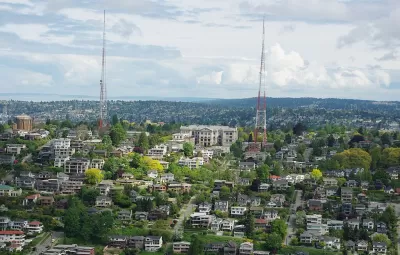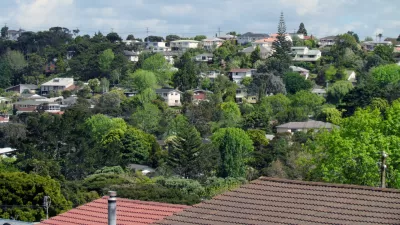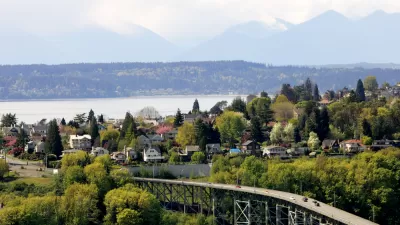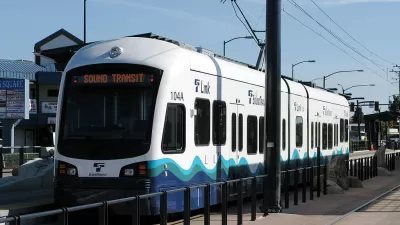The city should look back to its past for lessons about creating more livable, affordable, and equitable neighborhoods, says a new report.

The Seattle Planning Commission has released a new report that advocates for a move away from single-family zoning. The report recommends that the city instead embrace a more diverse array of housing types that brings back “missing middle housing.”
This housing—which include duplexes, multiplexes, and smaller apartment buildings—historically made up some of the most livable Seattle neighborhoods. But over time, zoning regulations changed and now only 12 percent of land is available for such small-scale developments, reports Natalie Bicknell.
So much low-density, single-family housing means that Seattle has not kept up with its housing needs, says Bicknell:
With roughly 75% of available land reserved for single-family lots, despite the city having added more than 180,000 residents, some single-family zoned areas of the city have actually declined in population since the 1970’s. At the same time, since 1900 the average size of a single-family home has increased by 1,000 square feet.
The report proposes a range of strategies, including incentivizing and easing restrictions on smaller and denser housing developments, limiting the size of single-family homes, and developing urban villages that provide access to transit.
FULL STORY: Is it Time to Ditch 1950’s Era Single-Family Zoning?

Planetizen Federal Action Tracker
A weekly monitor of how Trump’s orders and actions are impacting planners and planning in America.

Maui's Vacation Rental Debate Turns Ugly
Verbal attacks, misinformation campaigns and fistfights plague a high-stakes debate to convert thousands of vacation rentals into long-term housing.

Restaurant Patios Were a Pandemic Win — Why Were They so Hard to Keep?
Social distancing requirements and changes in travel patterns prompted cities to pilot new uses for street and sidewalk space. Then it got complicated.

In California Battle of Housing vs. Environment, Housing Just Won
A new state law significantly limits the power of CEQA, an environmental review law that served as a powerful tool for blocking new development.

Boulder Eliminates Parking Minimums Citywide
Officials estimate the cost of building a single underground parking space at up to $100,000.

Orange County, Florida Adopts Largest US “Sprawl Repair” Code
The ‘Orange Code’ seeks to rectify decades of sprawl-inducing, car-oriented development.
Urban Design for Planners 1: Software Tools
This six-course series explores essential urban design concepts using open source software and equips planners with the tools they need to participate fully in the urban design process.
Planning for Universal Design
Learn the tools for implementing Universal Design in planning regulations.
Heyer Gruel & Associates PA
JM Goldson LLC
Custer County Colorado
City of Camden Redevelopment Agency
City of Astoria
Transportation Research & Education Center (TREC) at Portland State University
Jefferson Parish Government
Camden Redevelopment Agency
City of Claremont





























